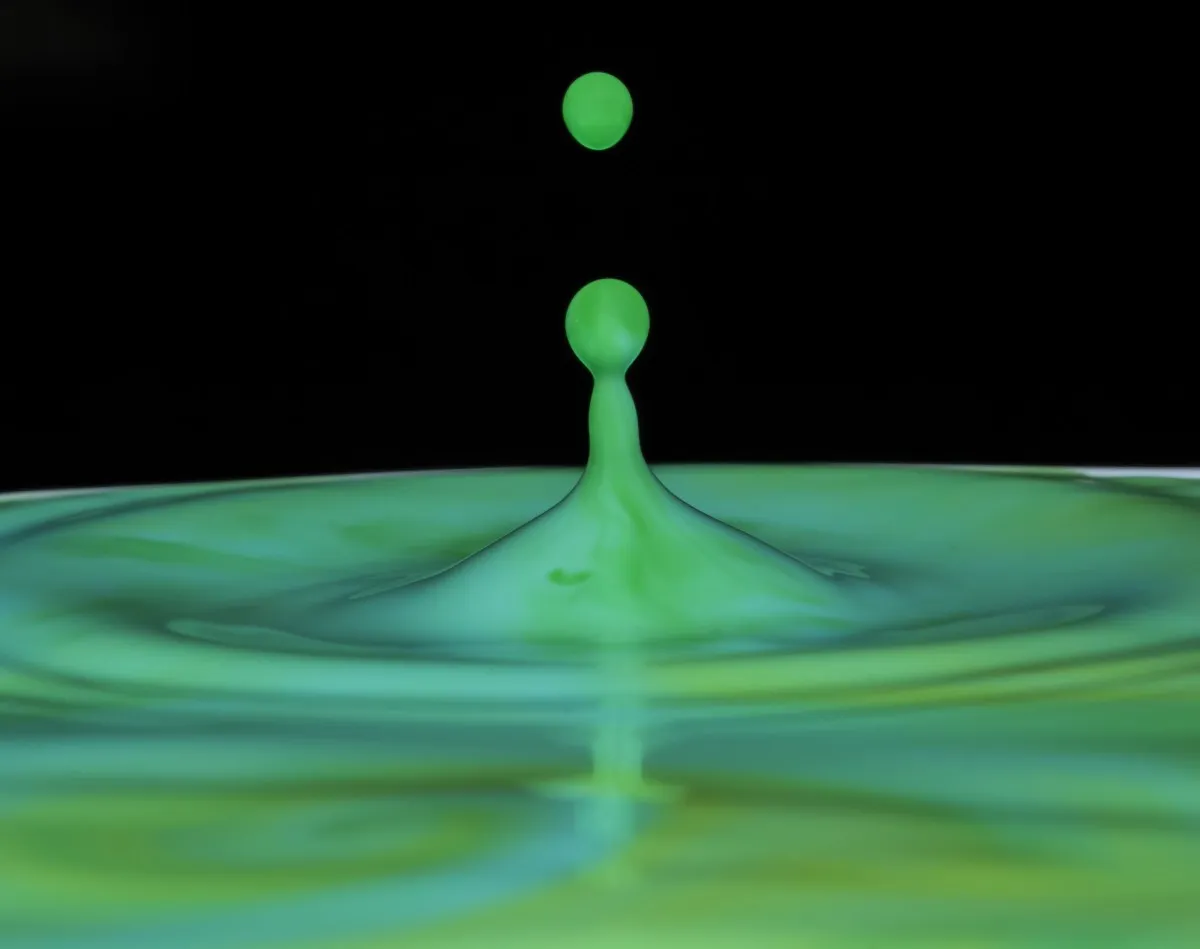This content was deleted by the author. You can see it from Blockchain History logs.

[Image1]
Introduction
Hey it's a me again @drifter1!
Today we continue with Physics, and more specifically the branch of "Classical Mechanics", in order to make an Introduction to Fluid Dynamics.
So, without further ado, let's get straight into it!
Ideal Fluid
Up to this point, we only studied fluids at rest. Fluids in motion are more complex, but there are some concepts that can be explained through the use of idealized models.
First of all, real fluids have internal friction, which is known as Viscosity (The concepts of viscosity and turbulence will be covered more thoroughly in a later part) and the density in compressed fluids is not constant. For that reason, models are based upon ideal fluids. An ideal fluid is basically an uncompressed fluid with negligible viscosity.
In the case of liquids, the assumption of no compression tends to be a good approximation. For gases no compression only makes sense when the difference in pressure between the various regions is not big.
Viscosity (internal friction) causes shear stress as the fluid is in motion. In some cases, the shear forces are negligible as they are much smaller than gravity and pressure. So, ignoring viscosity is sometimes feasible even in real occasions.
Flow Characteristics
The motion of fluids can be represented through streamlines. A streamline represents the path that a small volume of fluid "follows" as it flows. The velocity of the fluid is tangent to these streamlines.

If the flow can be represented by smooth, and mostly parallel, streamlines and doesn't change much over time, we are talking about steady or laminar flow. On the other hand, if the streamlines are irregular and change over time, the flow is known as turbulent.
Volume Flow Rate
When talking about fluids, velocity isn't that useful. For example, rapid mountain streams carry less water then wide and deep rivers. So, it makes sense to talk about the volume (or even the mass) that flows by a given location through an area during a period of time. This is known as volume flow rate and denoted by Q, or mathematically:

The volume of a cylinder is equal to A dx, where A is the area of the cross-section and dx the width of the portion of fluid. So, considering a cylinder the previous equation can be re-written as:

which relates the volume flow rate, cross-sectional area and velocity.
The S.I. unit of flow rate is the m3/sec, but its also common to use liters per minute (L/min).
Flow Continuity
Let's consider a fluid pipe with decreasing radius. We are talking about a real fluid which is incompressible, and so the same amount of fluid must pass by any point in the tube. In order to ensure flow continuity (no mass is added or removed) the same mass must flow in and flow out at any given point. When the density is the same, we can extend our logic towards volume. So, as the cross-sectional area decreases the velocity must increase. In other words, the volume flow rate must be constant.
Therefore, for any two points in a pipe, we define:

Liquids are considered incompressible and so this equation of continuity is valid for all liquids. For gases, however, which are compressible by nature, any compression or expansion of the gas must be considered as well.
Mass Flow Rate
Another way of describing the flow rate of fluids is by the mass flow rate. Mass can always be determined from the density and volume, and so the mass flow rate is defined as:

Applying the concept of continuity, the mass entering must be equal to the mass leaving the pipe, or any given point in the pipe, and so:

which is the general form of the continuity equation.
For an ideal fluid the densities cancel each other out, yielding the equation mentioned earlier. This general form makes only sense in the case of real fluids.
RESOURCES:
References
- https://courses.lumenlearning.com/suny-osuniversityphysics/chapter/14-5-fluid-dynamics/
- https://www.khanacademy.org/science/physics/fluids/fluid-dynamics/a/what-is-volume-flow-rate
Images
- https://pxhere.com/en/photo/1045542
Mathematical equations used in this article, where made using quicklatex.
Visualizations were made using draw.io.
Previous articles of the series
Rectlinear motion
Plane motion
Newton's laws and Applications
Work and Energy
- Work and Kinetic Energy -> Definition of Work, Work by a constant and variable Force, Work and Kinetic Energy, Power, Exercises
- Conservative and Non-Conservative Forces -> Conservation of Energy, Conservative and Non-Conservative Forces and Fields, Calculations and Exercises
- Potential and Mechanical Energy -> Gravitational and Elastic Potential Energy, Conservation of Mechanical Energy, Problem Solving Strategy & Tips
- Force and Potential Energy -> Force as Energy Derivative (1-dim) and Gradient (3-dim)
- Potential Energy Diagrams -> Energy Diagram Interpretation, Steps and Example
- Internal Energy and Work -> Internal Energy, Internal Work
Momentum and Impulse
Angular Motion
- Angular motion basics -> Angular position, velocity and acceleration
- Rotation with constant angular acceleration -> Constant angular acceleration, Example
- Rotational Kinetic Energy & Moment of Inertia -> Rotational kinetic energy, Moment of Inertia
- Parallel Axis Theorem -> Parallel axis theorem with example
- Torque and Angular Acceleration -> Torque, Relation to Angular Acceleration, Example
- Rotation about a moving axis (Rolling motion) -> Fixed and moving axis rotation
- Work and Power in Angular Motion -> Work, Work-Energy Theorem, Power
- Angular Momentum -> Angular Momentum and its conservation
- Explaining the Physics behind Mechanical Gyroscopes -> What they are, History, How they work (Precession, Mathematical Analysis) Difference to Accelerometers
- Exercises around Angular motion -> Angular motion examples
Equilibrium and Elasticity
- Rigid Body Equilibrium -> Equilibrium Conditions of Rigid Bodies, Center of Gravity, Solving Equilibrium Problems
- Force Couple System -> Force Couple System, Example
- Tensile Stress and Strain -> Tensile Stress, Tensile Strain, Young's Modulus, Poisson's Ratio
- Volumetric Stress and Strain -> Volumetric Stress, Volumetric Strain, Bulk's Modulus of Elasticity, Compressibility
- Cross-Sectional Stress and Strain -> Shear Stress, Shear Strain, Shear Modulus
- Elasticity and Plasticity of Common Materials -> Elasticity, Plasticity, Stress-Strain Diagram, Fracture, Common Materials
- Rigid Body Equilibrium Exercises -> Center of Gravity Calculation, Equilibrium Problems
- Exercises on Elasticity and Plasticity -> Young Modulus, Bulk Modulus and Shear Modulus Examples
Gravity
- Newton's Law of Gravitation -> Newton's Law of Gravity, Gravitational Constant G
- Weight: The Force of Gravity -> Weight, Gravitational Acceleration, Gravity on Earth and Planets of the Solar System
- Gravitational Fields -> Gravitational Field Mathematics and Visualization
- Gravitational Potential Energy -> Gravitational Potential Energy, Potential and Escape Velocity
- Exercises around Newtonian Gravity (part 1) -> Examples on the Universal Law of Gravitation
- Exercises around Newtonian Gravity (part2) -> Examples on Gravitational Fields and Potential Energy
- Explaining the Physics behind Satellite Motion -> The Circular Motion of Satellites
- Kepler's Laws of Planetary Motion -> Kepler's Story, Elliptical Orbits, Kepler's Laws
- Spherical Mass Distributions -> Spherical Mass Distribution, Gravity Outside and Within a Spherical Shell, Simple Examples
- Earth's Rotation and its Effect on Gravity -> Gravity on Earth, Apparent Weight
- Black Holes and Schwarzschild Radius -> Black Holes (Creation, Types, How To "See" Them), Schwarzschild Radius
Periodic Motion
- Periodic Motion Fundamentals -> Fundamentals (Period, Frequency, Angular Frequency, Return Force, Acceleration, Velocity, Amplitude), Simple Harmonic Motion, Example
- Energy in Simple Harmonic Motion -> Forms of Energy in SHM (Potential, Kinetic, Total and Maximum Energy, Maximum Velocity), Simple Example
- Simple Harmonic Motion Equations -> SHM Equations (Displacement, Velocity, Acceleration, Phase Angle, Amplitude)
- Simple Harmonic Motion and Reference Circle -> SHM and Smooth Circular Motion, Reference Circle
- Simple Harmonic Motion Exercises -> 2 Complete Examples on Simple Harmonic Motion
- Simple Pendulum -> Simple Pendulum (Return Force, Small Angle Approximations, More Accurate Period, Gravity Approximation)
- Physical Pendulum -> Physical Pendulum (Return Torque, Small Angle Approximations, Estimating Moment of Inertia)
- Exercises around Pendulums -> Complete Examples on the 2 types of Pendulums (Simple, Physical)
- Damped Oscillation -> Damping Force, Total Force and Differential Equation, Motion Equations, Special Cases
- Forced Oscillation and Resonance -> Forced Oscillation (Differential Equation, Amplitude, Resonance)
- Exercises around Damped and Forced Oscillation -> Complete Examples on Damped Oscillation and Forced Oscillation
- Chaos and Chaotic Oscillation -> Chaos, Unpredictability and Randomness, Chaotic Oscillation
Fluid Mechanics
- Density and Pressure -> Fluids and Fluid Mechanics, Density, Specific Gravity, Pressure
- Measuring Pressure in Fluids -> Pressure in Fluids (Variation with Depth), Absolute and Gauge Pressure, Measuring Pressure
- Pascal's Principle and Hydraulics -> Static Equilibrium, Pascal's Principle, Hydraulic Systems
- Archimedes' Principle and Buoyancy -> Buoyant Force, Archimedes' Principle, Relation with Density
- Surface Tension -> Surface Tension (Cohesive and Adhesive Forces, Unit, Definition), Capillarity
- Exercises on Fluid Statics (part 1) -> Various Density and Pressure Examples
- Exercises on Fluid Statics (part 2) -> Hydraulic Car Jack, Buoyancy Examples, Surface Tension Example
Final words | Next up
And this is actually it for today's post!
Next time we will talk about Bernoulli's Equation...
See ya!

Keep on drifting!







